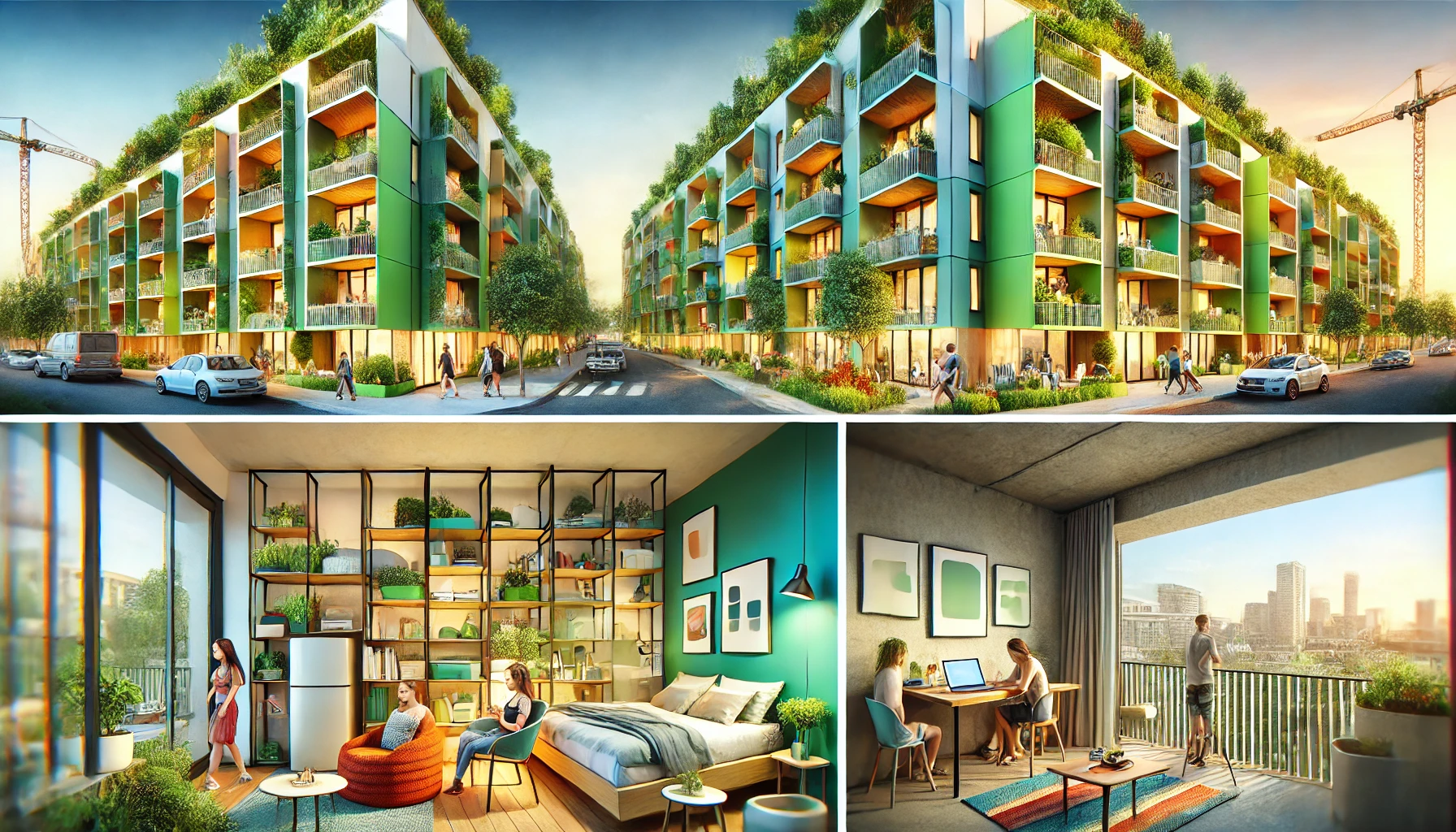Urban areas have recently seen a rise in creative living arrangements to tackle problems like high housing costs, limited space, and the need for social interactions. Micro-community living spaces, also known as co-living spaces or micro-apartments, have become a popular solution, especially in crowded cities. This article discusses the idea, advantages, challenges, and future of these living spaces.
What Are Micro-Community Living Spaces?
Micro-community living spaces mix small, well-designed private units with shared common areas. They focus on being affordable, sustainable, and building a sense of community among residents.
Typically, a micro-community includes:
- Private Spaces: Small personal rooms or apartments with essential amenities like a bed, kitchenette, and bathroom.
- Shared Areas: Larger communal spaces such as kitchens, living rooms, gyms, coworking areas, and recreational zones where residents can meet and work together.
These setups attract young professionals, digital nomads, students, and those looking for affordable housing without giving up quality of life.
Key Features of Micro-Community Living
Compact Design
Micro-units are designed to be functional. Smart furniture, multipurpose spaces, and simple aesthetics help make the most of limited space.
Shared Resources
Communal kitchens, laundry rooms, and entertainment zones lower costs for each individual and promote sustainable living by reducing resource waste.
Community-Oriented Spaces
These living arrangements focus on social interactions through organized events, workshops, and communal dining, creating a strong sense of belonging.
Flexible Leasing Options
Many micro-community living spaces offer short-term leases, ideal for transient populations such as students or business travelers.
Benefits of Micro-Community Living Spaces
- Affordability
- Lower rent due to smaller individual units and shared amenities.
- Social Connection
- Encourages meaningful interactions and builds support networks.
- Eco-Friendly Living
- Shared resources and smaller spaces result in a lower carbon footprint. Many use energy-efficient appliances and renewable energy sources.
- Convenience
- Located near workspaces, public transportation, and entertainment, making city life easily accessible.
- Flexibility
- Short-term commitments appeal to those with dynamic lifestyles, like remote workers and freelancers.
Challenges of Micro-Community Living Spaces
While there are many benefits, there are also challenges:
Privacy Concerns
Sharing communal areas may not be suitable for everyone, especially those who value their privacy.
Cultural Differences
Diverse communities can lead to conflicts due to different lifestyles and habits.
Space Limitations
Despite smart designs, micro-apartments may feel cramped for those used to larger living spaces.
Sustainability of the Model
Maintaining shared spaces and building a strong community requires active management, which can increase costs.
Examples of Micro-Community Living Spaces
WeLive (USA)
A branch of WeWork, WeLive offers co-living spaces in cities like New York and Washington, D.C., with fully furnished apartments and communal areas.
The Collective (UK) Situated in London, The Collective merges trendy micro-apartments with facilities such as a cinema, gym, and communal kitchen, appealing to young professionals.
Zoku (Europe)
Zoku is renowned for its hybrid living spaces, catering to digital nomads with compact apartments and coworking areas.
The Future of Micro-Community Living
As urban areas expand and housing prices increase, micro-community living spaces are set to gain even more traction. Technological developments like smart home features and AI-driven community management will enhance residents’ experiences. Furthermore, governments and urban planners might increasingly back these initiatives to ease housing shortages and support sustainable urban growth.
Micro-communities could also adapt to serve specific groups, such as senior citizens, artists, or families, by customizing amenities and activities to their distinct needs.
Conclusion
Micro-community living spaces transcend being merely a housing trend; they signify a transformation in our approach to urban living. By integrating affordability, sustainability, and social interaction, these creative spaces tackle some of the most urgent issues of contemporary city life. As this idea progresses, it has the potential to change how we live, work, and interact in urban settings.







Leave a Reply